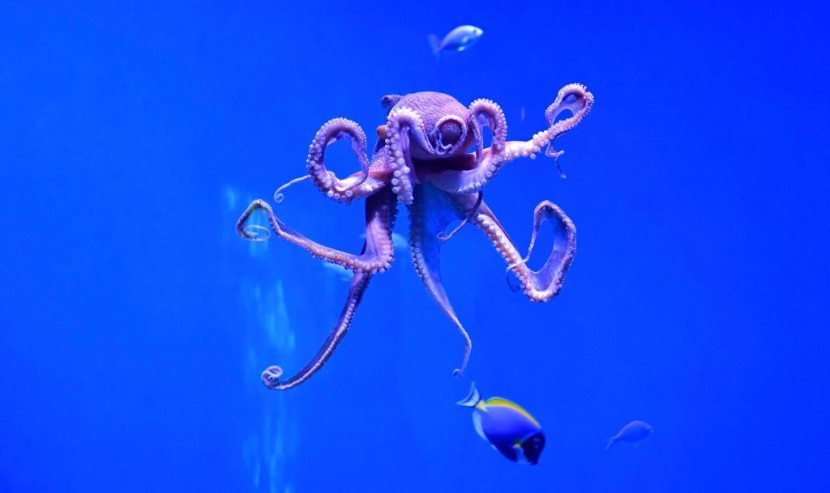
Octopuses seem to be left or right-handed, with each of their eight being used to manipulate prey. Possessing more than two appendages is not easy, but having as many as eight can be a nightmare to control, but they could be more independent than considered.
Preferred Arm of an Octopus
Researchers have pointed out that complex motor control is not the cause for an octopus, but each arm has a preference for specific prey, reported Science Alert.
Of these eight-armed invertebrates, the California two-spot octopus was chosen to be tested to see what happened by dropping food inside their tanks.
These invertebrates were hiding inside their den, and one eye was on the lookout all the while. Many videos showed them preferring the second arm from the middle, adjacent to their eye, to use to catch their food, per Science Direct.
At other times, they would use arms near the one they were using at the moment. According to the published paper, each of the arms can function independently. Each one is for a specific action affected by evolutionary adaptiveness.
Octopuses strike crabs and shrimp in various ways since they move differently and at distinct speeds. When tackling crabs, they pounce like cats and capture the crustaceans with their second arm. It is easier for an octopus to catch slower scuttling crabs too.
To ensure that quick and evasive shrimp don't get away, they move the second arm slowly to keep the shrimp from seeing it. Octopuses camouflage a slow movement until one of their eight arms wraps around a fast-moving shrimp.
Octopuses Camouflage Their Arm's Movements
Study authors explain that these animals can be invisible by copying the environment when hunting, noted Cell.
The arms would sway close to the shrimp, so it will think there is no danger; that lessens the chance of escape from the trap. Once the lead arm secures the target, appendages one and three will go around to get the prey.
Researchers cite the second-arm attack as convincing, and these animals are not the type to even be coordinated. They posit that the field of vision of an octopus was considered in prior studies. These invertebrates' eyes have 180-degree vision with no intersection and have restricted eye movement but no head movement.
One assumption is these animals sight their victim in the middle of their visual field instead of their peripheral vision. Seconds matter when it comes to capturing food in the wild, so it would seem that by streamlining the capture process as well as using multiple arms, the animals can boost their chances of capturing some food.
Biologists can now scrutinize how neuron activity is connected to certain exact motor functions. Scientists believe the octopus' central nervous system is just not required to participate in recruiting extra arms to grab food sources; instead, it's more probable to be a natural reflex.
According to the researchers, an improved understanding of the dynamics underpinning this arm synchronization can also aid in developing soft robots, especially those that can work underwater. How octopuses deal with having eight arms and having specific that seems to be used more than others, is relevant to know more about them.








